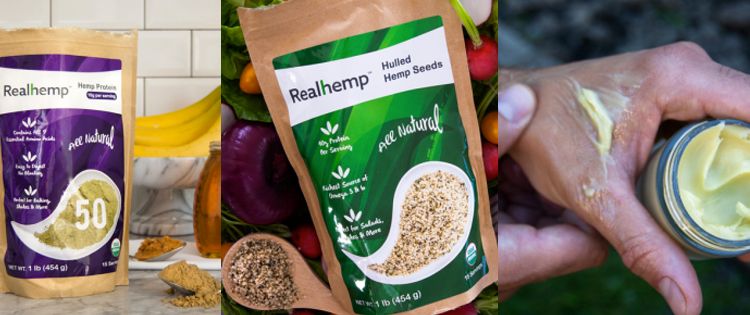Before cannabis was illegal in the eyes of the masses, there was once a known variety of the cannabis plant that had many industrial uses. It is called Hemp.
The many uses of Industrial Hemp, which is in the same gene pool as of Cannabis Sativa, was predicted in the past to have been worth billions when it was introduced.
In May 2016, the film “Harvesting Liberty: A short film about growing hemp in the USA” was released by Patagonia, which takes you on a journey into another side of the cannabis debate- re-discovering Industrial Hemp.
In the film, Dan Malloy meets with advocates of hemp production and farmers to discuss the potential industrial hemp has to “lower the environmental impacts of textile production, empower small-scale farmers and create jobs in a wide variety of industries”
You can watch this film is beautifully-shot below.
The information shared, uncovers another solid argument to why this plant should be made legal.
For example, did you know, Industrial Hemp had over 50,000 uses and was on its way to becoming the number one most useful crop in the planet? Hemp catered to producing products like:
- Rope
- Fabric
- Paint
- Paper
- Maps
- Fuels
- Clothes
- Cosmetics
But because of the illegalization of cannabis, the production of hemp was put to a complete halt.
In this article, I will walk you through how “hemp”, a plant that could have replaced valuable resources like cotton and wool, became overshadowed by the stigma and criminalization along with the rest of cannabis family.
History of Industrial Hemp
When we talk about the history of Industrial Hemp, we are talking about one of the most useful materials we have on our planet today.
The industrial use of hemp dates back to ancient times, 12,000 years, 8000 BC. Carbon testing suggests evidence of hemp material being cultivated for many uses during these times, for paper, pots, huts and more.
The history of industrial hemp and its many uses can be found all over the world across all continents.
In countries like Japan, China, Smyrna, and those with rich cultures that we see today, had cultivated and produced hemp in the past.
 |
Archeological findings suggest that China had been using hemp since the neolithic times. |
 |
The popularity of Industrial Hemp arose in Great Britain in the 16th century. This is when Henry the III encouraged hemp farming in all villages to help provide the European country materials to use for their Army. Industrial Hemp gave way to making ships, sails and all equipment needed for their naval fleets to explore and conquer different continents. |
 |
Industrial Hemp was also used in Europe to make maps, Bibles and canvas, canvas deriving its name from the word “cannabis”. |
 |
Hemp production was abundant during the 17th century in Colonial America. People use to plant hemp everywhere, having a rough estimate of over 8,400 plantations in the country. Hemp was grown purely for industrial reasons, being the number one material to be used for food, shelter, and clothing. |
 |
Some of the very first American flags were made out of the Hemp fabric. |
 |
During the 1920’s, the cultivation of Hemp in America’s farmlands are already mechanical. Industrial hemp was booming for its countless produce and was even promoted in the last Vietnam War, America using the slogan, Hemp for Victory. |
Now, as we move towards a new era, where the truth about cannabis is no longer hidden, we see a new light not only for medical cannabis but for industrial hemp making a comeback.
Hemp Production and Farming

image courtesy of realhemp.com
Hemp can be rapidly grown in almost all regions and continents across the globe. It has a strong resistance to pests and can be left to grow and repopulate by itself.
Hemp usually matures around 6-8 weeks and is ready to harvest by then.
Harvesting hemp is still a challenge for most farmers today. Since industrial advancement in technology does not cater to harvesting hemp for legal reasons, there is rarely machinery specific to hemp farming and cultivation. Why engineer machinery for an illegal crop?
One of the rare companies who had dedicated research and development for harvesting, cultivating and producing hemp is Hempflax. The company has custom-built equipment for hemp production and although the equipment is used it is not sold in a commercial market, however, the hemp products are available for purchase.
Another company that has been looking into the cultivation and production of hemp and its machinery is Stemergy. Operating since 1994, Stemergy has cultivated hemp and has made its fibre commercially available for a wide variety of industrial uses. The company produces top quality hemp fibres that had been locally grown and cultivated in Ontario, Delaware.
Despite the lack of modern machinery for hemp farming and production, there are a lot of different techniques that already exist since the past millennia.
An example of widely known techniques that have been used in past years are:
- The French method for cultivating paper (also a dual method for collecting seeds and fibre)
- And the method used for the textile industry (harvesting the fibre alone)
Harvesting hemp can yield high amounts of cellulose, oils, edible proteins and fibres that can be used for 50,000 different industrial applications.
Issues Related To Industrial Hemp

The stigma that circulates hemp production is due to the criminalization of cannabis.
The prohibition that took place in the 1930’s ruled that all genus of the cannabis plant, including hemp, was illegal to cultivate and was scheduled as a narcotic drug.
So what’s the difference between Hemp and Cannabis?
Hemp does have a 0.3% THC level, but this is in nowhere near enough to have a psychoactive effect. In fact, hemp can be beneficial if ingested or taken into the system since THC and CBD do have medicinal properties.
Hemp can be taken in as food without the medicinal and recreational high unlike other cannabis plants.
Most countries have laws in government that do not distinguish psychoactive cannabis from the non-psychoactive variety. Even though the use of Industrial and Commercial hemp can benefit and pull up a country’s economy, hemp production is nearly impossible to do.
There is also a factor in global positioning for big corporations that capitalize on certain industries. Multi-million dollar companies such as those that produce cotton and oil, cannot allow hemp production to be implemented since this can threaten their means for capitalization.
Revolutionizing Hemp
Despite the stigma surrounding the hemp industry and its prohibition in selected countries, the economic benefits hemp was able to contribute throughout history is indeed undeniable.
People, businesses and industries, especially those in nations that are very capable of producing hemp, should be educated properly and be made aware of its beneficial properties.
While local and global economic regulations should also give way and provide opportunities to small industries and businesses who want to venture on hemp, as this could be a step towards a proactive global economy.
Do you agree with the promotion and use of industrial hemp in today’s industries?
Share your opinion in the comment section below!
- How to Use Waxmaid Honey Pen? - April 9, 2024
- How To Choose The Best Electric Dab Rig For Christmas - December 7, 2023
- Maintenance Matters: Keeping Your Glass Water Bong in Pristine Condition - October 9, 2023


